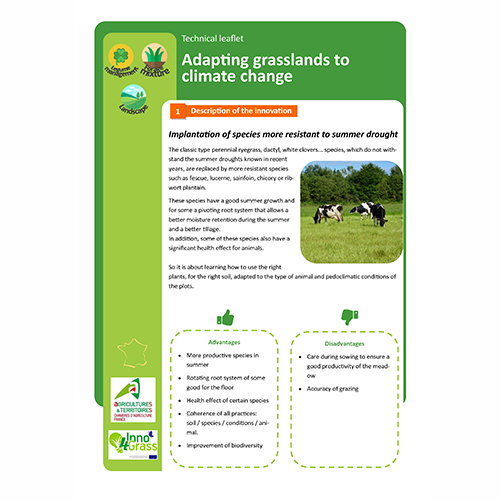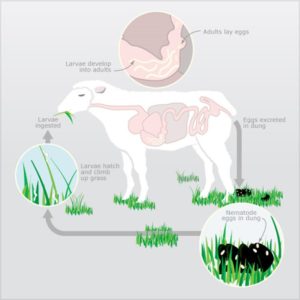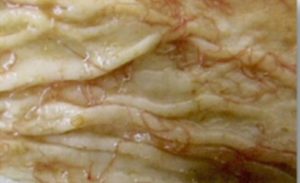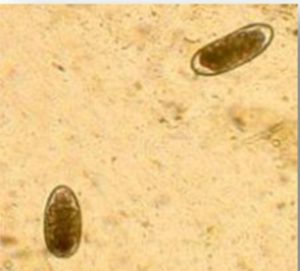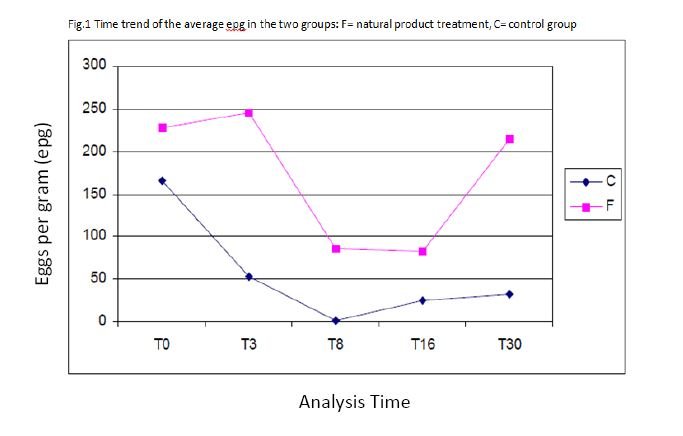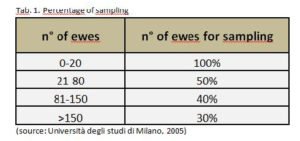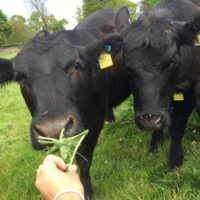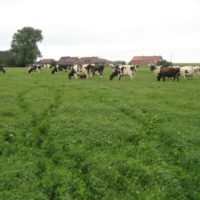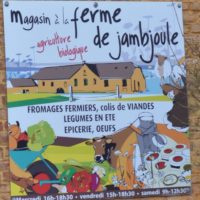Description
General context
In many Italian hilly and mountainous areas, transhumance and grazing still characterise many small and medium farms, allowing preservation of traditions, typical products, environment and landscape. Nonetheless, the animal-environment interaction can lead to a greater exposure of animals to endoparasites. Sheep are highly susceptible to Gastrointestinal nematode (GIN) and Gastrointestinal parasite (GIP) infections. Over the years, GIP and GIN induce an increase of the treatments with synthetic chemicals, often poorly effective. Moreover, medical treatments:
- involve side effects and contamination of the food chain, especially meat.
- The pharmacological residues with long persistence in animal faeces negatively influence plant and entomological biodiversity of grasslands.
For these reasons, many farmers prefer to reduce the grazing areas and increase the housing. As an alternative, two complementary strategies can be adopted to address these problems:
- the agronomic and grazing management of grasslands;
- the use of non-chemical treatments.
Both of them should be based on the qualitative and quantitative diagnosis of the infestations and their monitoring from the animal.
Guidelines to prevent gastroinstestinal parasites
Several agronomic and grazing management practices can be used to reduce and control infestations and improve grazing activity.
Where grasslands is mainly temporary it may be useful to have periods without covering the surface between sowings and possibly make deep tillage.
An efficacious technique to be used in small surfaces is definitely the solarization with which both the larvae and the eggs are easily eliminated.
In areas with high infestation, grazing should be avoided during periods when climatic conditions are favourable for parasites, especially rainfall and temperature.
Grazing rotation can be carried out taking into account several factors:
- climatic conditions;
- alternating species (cattle, horses) on the same grazing area as they are not natural hosts of the same parasites. This reduces the parasitic load on grassland;
- subdivision of grazing area into surfaces to be used in rotation with a permanence period of 2-4 weeks and suspension period of about 2-3 months;
- alternating young and adult animals.
The last innovative concept concerns the increase of flock resilience to parasites. This practice can last few generations ( according to replacements) and consists in allowing the lambs to graze on infected grassland in order to develop an adequate immune response to parasites. Thanks to this sensible management method, some Italian farms have succeeded in keeping their grazing activities alive.
The agronomic practices can be carried out in combination with pharmacological treatments to animals.
Some innovative treatments based on phyto-derived products are available. Their effectiveness has been showed in recent research.
Diagnostic methods available to measure gastroparasite loads in sheep.
FLOTAC® microscopy technique.
This technique allows to directly count the parasitic elements (eggs, larvae) from a single gram of stool, with very accurate results and a very short execution time (4 hours). Thanks to this, it is possible to act effectively both with treatments on the animal and with the management of the grazing flock. It has been developed by the Department of Pathology and Animal Health of the University Federico II of Na-ples.
Faecal egg count reduction test (FECRT).
It is based on the calculation of the epg in faeces with the McMaster method.
To carry out this kind of tests it is important to have a representative and realistic sample to examine.
Advantages
- Grassland sustainability
- Grassland biodiversity
- Chemical treatments decrease
- No animal sacrifice needed (Microscope analysis)
- Very accurate results
Disadvantages
- Investment costs (faecal analysis needed)
- Management costs
- Infestation monitoring
- Representative and realistic sample to examine needed
More information
- Regione Lombardia, ARAL, Università degli studi di Milano, SATA, 2011. Allevamento caprino in lombardia:stato igienico-sanitario e produzioni.Quaderni della ricerca n. 129
- Gentile.L., 2018. Pascoli e accessi esterni: linee guida sui rischi d’infestazioni parassitarie. Ruminantia, 9-2018
- Carta A., Scala A., (2004). Recenti acquisizioni sulla genetica della resistenza ai nematodi gastro-intestinali dei ruminanti. Parassitologia, 46 (1-2):251-255
- Cringoli G., Rinaldi L., Veneziano V., Pennacchio S., Gor-goglione M., Santaniello M., Schi-oppi M., Fedele V.,(2008). Gastrointestinal strongyle Faecal Egg Count ingoats: circadian rhythm and relationship with worm bur-den Vet. Res. Commun.32(Suppl. 1):S191-S193.
- Roncoroni C. et al, 2008. Controllo delle parassitosi ovine durante la monticazione. Quan-derno SOZOOALP n.5
- Cringoli G. et al, 2010. FLOTAC: new multivalent techniques for qualitative and quantita-tive copromicroscopic diagnosis of parasites in animals and humans. Nature Protocols vol-ume 5, pages503–515
